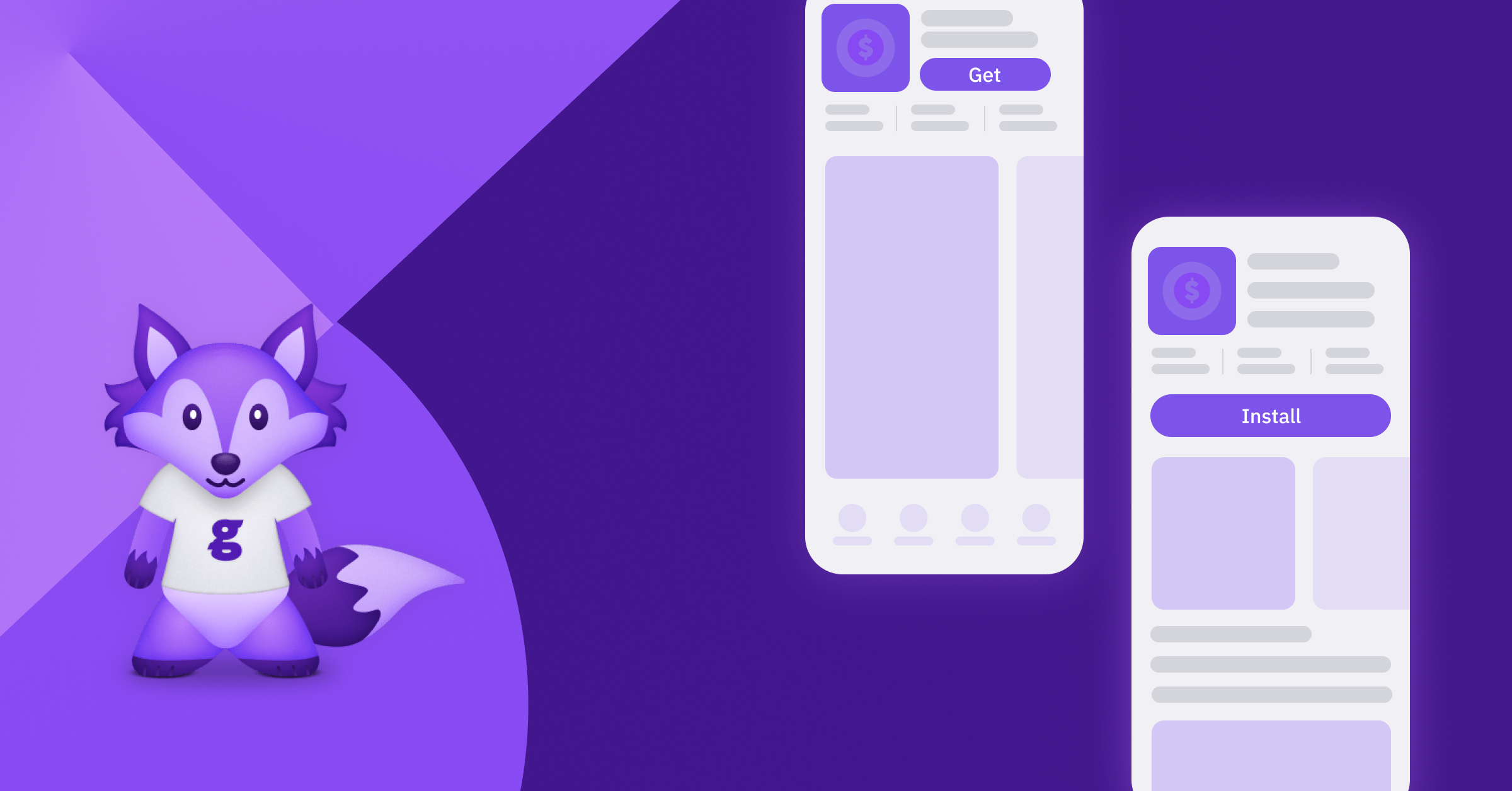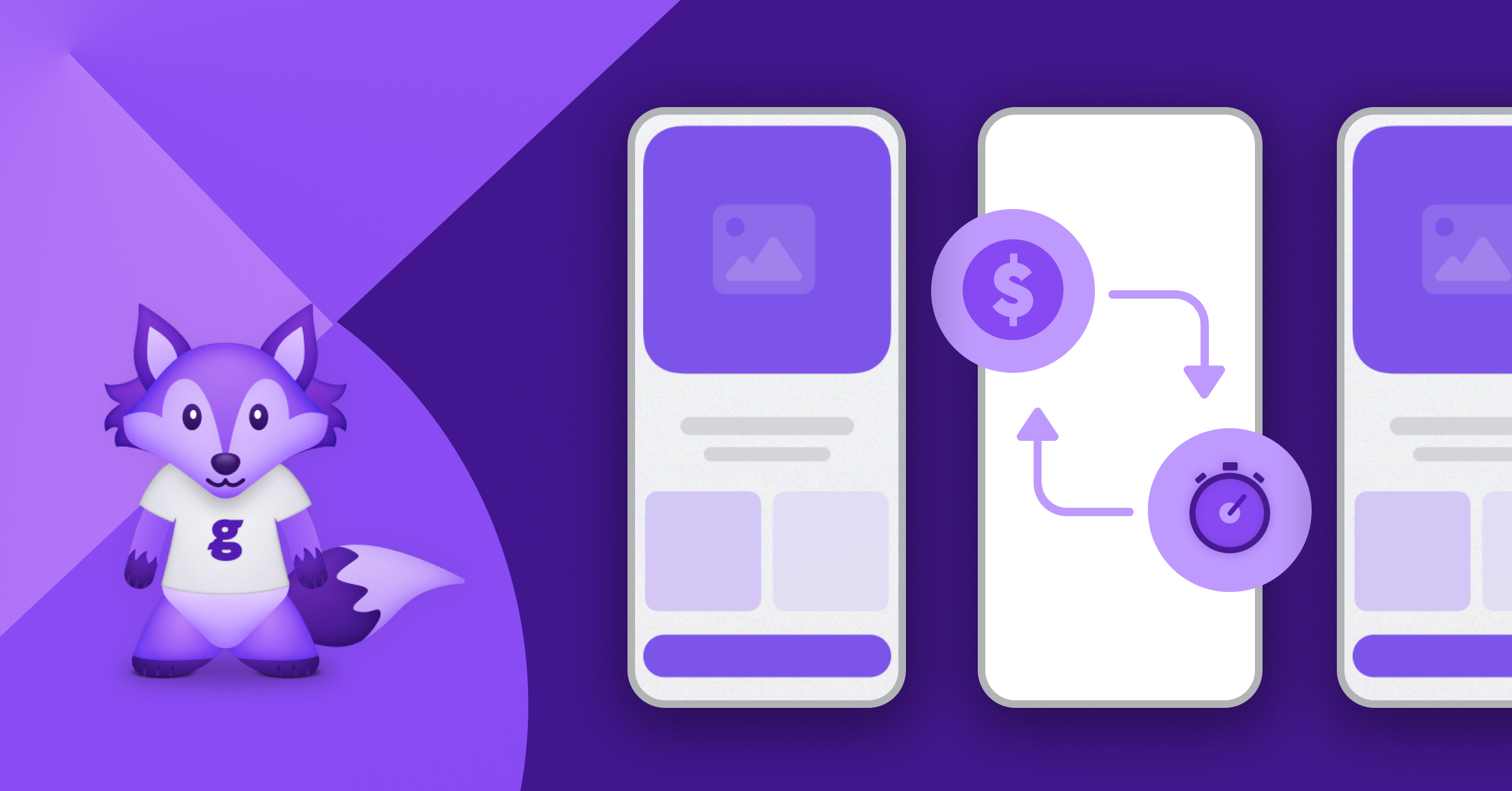Content
Top 5 Ways to Drive User Acquisition to a Mobile App
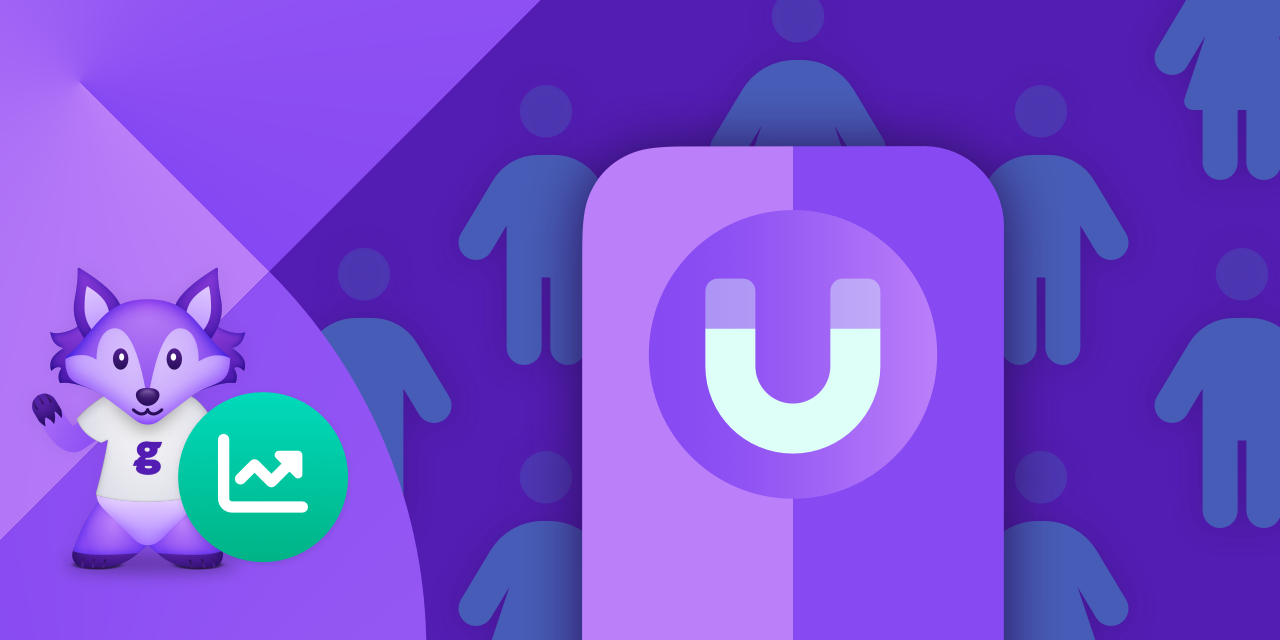
What is mobile app user acquisition?
Mobile app user acquisition refers to the process of attracting new users to download, install, and start using a mobile application. It’s a critical aspect of a mobile app’s growth strategy, aiming to increase the user base and ultimately drive usage, engagement, and revenue.
How does mobile user acquisition work?
Mobile user acquisition involves a series of steps and strategies designed to acquire users for mobile apps. Here’s an overview of how mobile user acquisition typically works:
- Understanding Your Target Audience: Defining the ideal user for your app involves creating a comprehensive profile that encapsulates specific demographics, behaviors, preferences, and in the case of B2B, firmographics.
- Choosing User Acquisition Channels: Once you have a clear picture of your ideal customer, the next step is identifying the platforms and channels where they are most active. They might be predominantly on social media, using specific search engines, or even engaging with niche forums.
- Craft a Compelling Message: Crafting a message that captivates your target users is the linchpin of any successful user acquisition strategy. This message should highlight the unique value proposition of your app, addressing the needs, pain points, or desires of your potential users. It should be clear, persuasive, and tailor-made to resonate with the specific audience you are targeting.
Together these form your mobile user acquisition strategy. In the following we will dive into 5 of the most effective user acquisition strategies to drive user acquisition to your mobile app:
1. Optimize your app store pages
Your app store pages are often the first point of contact potential users have with your app, so it’s important to make a good impression. Optimize your pages (App Store Optimization or ASO) by using relevant keywords, writing a compelling description, and including high-quality screenshots and videos. These elements play a vital role in attracting and engaging users, ultimately driving app downloads.
Relevant keywords where it makes sense
Utilizing relevant keywords is the foundation of a successful ASO strategy. Identify keywords that accurately represent your app and are commonly used by your target audience when searching for similar apps. These keywords should be strategically integrated into your app’s title, description, subtitle (if applicable), and keyword field to increase discoverability. However, don’t over-optimize for keyword density. Ensure that the keywords flow naturally within the context of your content to provide a seamless user experience.
Harness the potential of the description
Crafting a compelling description in the app store is equally essential in engaging potential app users. Clearly articulate what sets your app apart, its unique features, and how your app can address users’ needs or pain points. Highlight the benefits they would gain from using your app. A well-crafted description can significantly influence a user’s decision to download your app.
Thumb-stopping visuals
Incorporating high-quality screenshots and videos is crucial for showcasing your app’s user interface, design, and functionality. Visual elements provide users with a glimpse of the app’s aesthetics and usability. Choose the most appealing and representative screenshots that effectively demonstrate key features and provide a visually pleasing experience. Likewise, videos offer an interactive preview, allowing users to better understand how the app works and what to expect. Tip: Check out some of your favourite mobile apps and even your competitors for inspiration.
Learn & iterate
Regularly monitoring and analyzing the performance of your app store page is imperative to optimize and refine your ASO strategy. Pay attention to metrics such as app downloads, app page visits, user retention rates, and user reviews. You have access to them on the app stores. Analyze user feedback to identify areas for improvement and make data-driven decisions to enhance your app’s overall appeal and user acquisition efforts.
Real-world example
The mobile game “Pokémon GO” was a huge success upon its release, and a key factor in its success was its well-optimized app store pages. The pages featured clear and concise titles and descriptions, as well as high-quality screenshots and videos that showed off the game’s unique features.
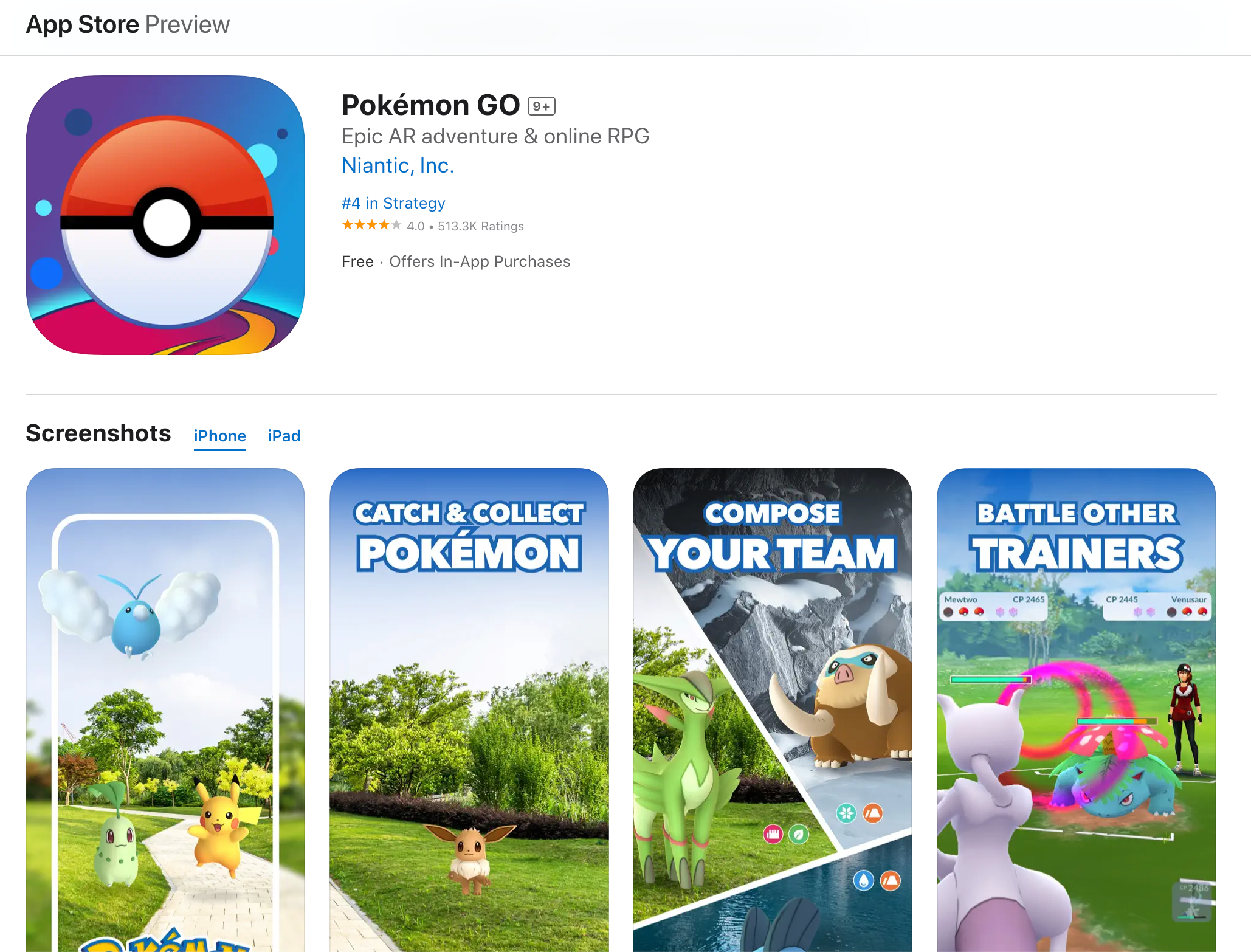
(source: App Store)
Case study
According to a study by App Annie, app store optimization can lead to a 50% increase in downloads.
2. Implement best SEO practices.
Search Engine Optimization (SEO) is a crucial aspect of a comprehensive mobile user acquisition strategy, especially for mobile app developers aiming to enhance their app’s visibility and reach. While App Store Optimization (ASO) remains a focal point for many app developers, overlooking SEO can be a significant missed opportunity. This is because a considerable portion of users searching for apps initiates their search outside of app stores. Therefore, integrating robust SEO practices is fundamental to attract users who are actively looking for apps similar to yours. To improve your SEO, use relevant keywords in your website’s title, description, and keywords field. You should also create high-quality content related to your app, such as blog posts, articles, and videos.
Keyword Research and Integration
Conduct thorough keyword research to identify the most relevant and high-performing keywords in your app’s niche. Utilize keyword research tools to find keywords that potential users often use in search queries related to your app and the pain point you are addressing. Once identified, strategically integrate these keywords into your website’s title, meta description, headings, URLs, and content. This ensures that search engines recognize your website as a relevant source when users search for related terms.
Furthermore keywords are the foundation of your content strategy. They inform topics you want to write about and content you want to create.
Tip: Utilize tools like Semrush to identify keyword gaps: “You will be able to see the keywords that your competitors are ranking for that you’re not. You can also identify the keywords that are unique to your domain and discover gaps in your competitors’ strategies.”
High-Quality Content Creation
Develop high-quality, informative, and engaging content related to your app and its niche. Create blog posts, articles, infographics, videos, tutorials, and other content that provide value to your target audience. Incorporate the identified keywords naturally within the content to improve its search visibility. Regularly updating your website with fresh, relevant content demonstrates your expertise and authority in the field, attracting both users and search engine attention.
Backlink Building and Outreach
Backlinks are links from other sites to yours. Acquire high-quality backlinks from authoritative and relevant websites within your industry. Engage in outreach efforts to collaborate with bloggers, influencers, or other websites to feature your app or write about related topics. Backlinks from reputable sources enhance your website’s credibility and contribute to higher search rankings. Focus on organic link-building strategies to maintain a positive and natural backlink profile. Paying for backlinks is viewed as a link scheme and will be penalized by search engines.
Tip: Create content others will want to link to, for example interesting industry stats.
Optimize Website Structure and Navigation
Design and structure your website in a way that is user-friendly and easy for search engine crawlers to navigate. Use clear, descriptive URLs, organized site architecture, and intuitive navigation menus. Ensure that your website is mobile-friendly and optimized for various devices, as mobile optimization is crucial for SEO and enhances the user experience. Especially since your target audience
User Experience and Page Speed
Optimize your website for speed and a seamless user experience. A fast-loading website enhances user satisfaction and reduces bounce rates, both of which are factors considered by search engines for ranking. Implement techniques such as image optimization (ie. lazy loading), caching, minimizing HTTP requests, and leveraging content delivery networks (CDNs) to improve page speed and overall website performance.
Real-world example
The mobile app “Duolingo” is a popular language learning app that uses SEO to attract new users. The app’s website and blog posts are optimized for relevant keywords, such as “learn Spanish” and “learn French.” This helps Duolingo rank higher in search results, making it more visible to potential app users.

(source: Google)
Case study
According to a study by Moz, well done SEO can drive up to 40% of all website traffic. Making this a great user acquisition strategy.
3. Utilize social media channels
Social media is a great way to connect with potential users and promote your app. Share engaging content on your social media channels, and use relevant hashtags to reach a wider audience. You can also run social media ads to target specific demographics.
Content Creation and Sharing
Engaging and relevant content is the cornerstone of successful social media marketing. Create compelling content that resonates with your target audience. This can include informative blog posts, eye-catching graphics, engaging videos, app tutorials, user testimonials, and other forms of content that showcase your app’s value and functionality. Regularly share this content across your social media channels to keep your audience informed and engaged.
Influencer Partnerships
Integrating engaging content creation and leveraging influencer partnerships into your mobile user acquisition strategy is a powerful approach. Collaborate with influencers within the mobile app domain, as they possess the ability to amplify your app’s visibility and influence user decisions. Influencers have established followings and can effectively promote your app to a broader audience. Select influencers whose audience aligns with your target demographic, and work with them to create engaging content, reviews, or sponsored posts about your app. They will drive your user acquisition.
Tip: You may hit a “writers block” at one point while creating Social media content. If you are already creating content like blog posts, you can leverage this long form content to create snippets for social media.
Real-world example
Calm, a meditation and relaxation app, effectively uses social media platforms like Instagram (3.1M followers) and Facebook to promote mental well-being, share mindfulness tips, and engage users with soothing visuals and quotes. They also collaborate with influencers and wellness experts to reach a broader audience.

(source: Instagram)
Case study
According to a study by Hootsuite, 63% of social media users say they have discovered a new product or service on social media.
4. Invite loyal customers to refer to your app
Referral marketing stands as an exceptional strategy in the realm of user acquisition, enabling app developers to tap into the power of their existing user base to attract new users. Offer your users rewards for referring their friends and family to your app. This could be in the form of discounts, free in-app items, or other perks.
Engaging Existing Users through Referral Incentives
One of the advantages of referral marketing is the ability to leverage your existing user base, which already has firsthand experience with your app. Satisfied users are more likely to enthusiastically recommend your app to others. Identify and segment satisfied users before nudging them actively. Asking for a referral too early in the customer journey or asking a non-satisfied user may backfire. They need to be champions of your app to increase the chances of a referral. By offering enticing incentives such as discounts, free in-app items, or other perks, you motivate them to take action and share their positive experiences with their social circle.
Fostering User Loyalty and Trust
Referral marketing nurtures a sense of loyalty and trust among your existing user base. When users are rewarded for referring others, they feel appreciated and valued. This positive interaction deepens their connection with the app and cultivates a sense of loyalty. Moreover, as referrals often come from trusted sources like friends or family, potential new users tend to have more confidence in trying out the app, establishing an initial level of trust.
Real-world example
The mobile payment app “Venmo” uses referral marketing to great effect. Venmo offers its users a bonus for each friend they refer to the app. This has helped Venmo to acquire millions of new users.
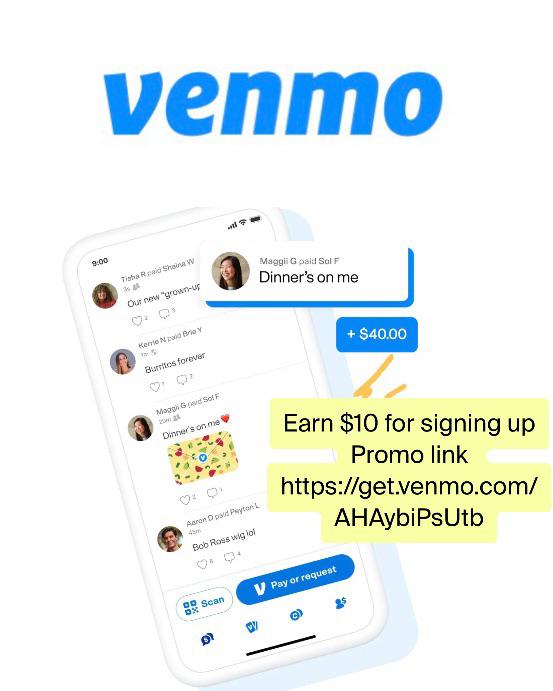
(source: Reddit)
Case study: According to a study by Nielsen, 92% of consumers trust recommendations from friends and family more than any other form of advertising.
5. Promotional Codes
Promotional codes are a way to drive acquisition of your app by providing the user with a unique code, to unlock access to the premium features of the app for a limited amount of time. Imagine this for trial periods, mass marketing campaigns, and bulk sales in B2B. This is particularly interesting for apps with significant sized audiences that monetize for the first time. It’s an opportunity to offer a sneak peek of your paid features to these existing users, enticing them to transition from free users to paying customers.
Unlocking with Store Codes
Within the realm of mobile app stores such as the App Store and Google Play Store, promotional codes are indeed available. However, each store offers its own set of unique promotional codes, making user acquisition very complex. The challenge here is in not always knowing the device of the user you’re targeting.
Glassfy Universal Codes
This is why at Glassfy we developed a feature called Universal Codes. These are super flexible codes, that are device and store agnostic. You won’t have to worry about the device a person is using any longer. Sign up today and generate as many codes as you wish within a few minutes.
Real-world example
When you’re a growing app you are looking for every possible way to have viral reach and extend word of mouth. Glassfy Universal codes are a way to generate device/store agnostic codes to give to your users for them to distribute to their friends and not worry about which devices they have. This gives access to unlock premium parts of the app for a set period of time.
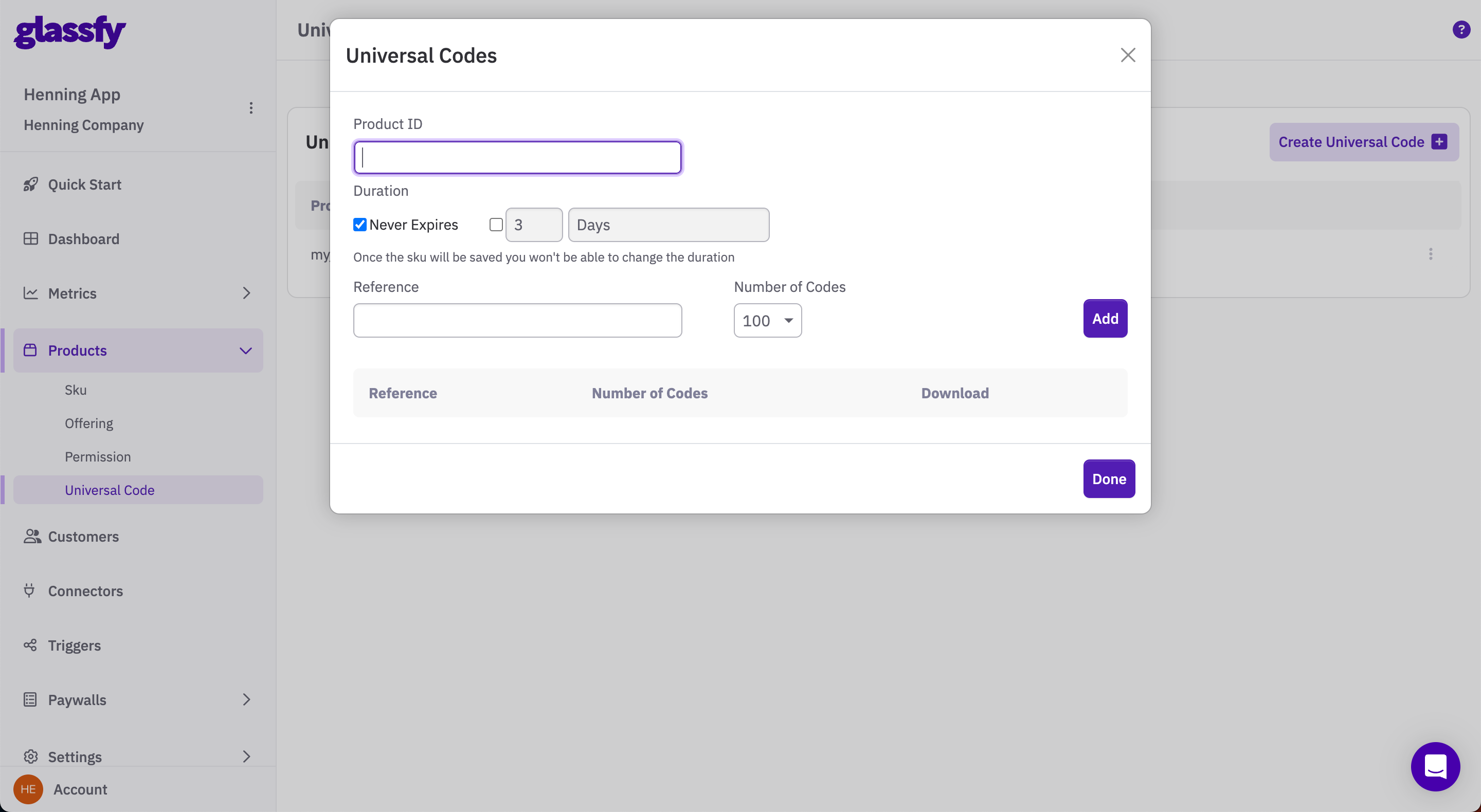
(source: Glassfy)
6. Mobile Ad Networks (Secret strategy)
Another very powerful strategy involves leveraging paid advertising. The advantage of paid ads is that you will start acquiring users instantly. Paid campaigns can be run via app stores, search engines and on Social media, but also within apps akin to yours. For instance, a to-do list app might strategically advertise on a recipe app, showcasing the seamless note-taking of ingredients. In such instances, affiliating with mobile ad networks will help broaden your reach and maximize impact.
Conclusion
Here you have it, our top 5 mobile user acquisition strategies (+1). In conclusion, devising a robust mobile app user acquisition strategy is paramount in today’s competitive landscape. Utilizing a multifaceted approach is key, integrating strategies such as App Store Optimization (ASO), paid advertising, influencer collaborations on Social media, referral programs, and leveraging universal codes for promotions.
Adapting and evolving these strategies based on user trends, feedback, and emerging technologies is essential. Analysis of user behavior, engagement metrics, and campaign performance enables continuous optimization, ensuring that the user acquisition strategy remains effective and aligned with the app’s growth objectives.
Read More
